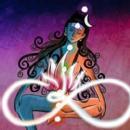Grace of rhythm offred by Author. Guru prasad swain. This class is specifically for khatak dance.
Khatak(correct spelling *Kathak*) is one of the eight major classical dance forms of India, with origins in North India. "Kathak" derives its name from the Sanskrit word *katha*, "story", and *kathakar*, "storyteller".
Origin and Background:
* Origins: Went back to ancient Hindu temples, where it was first performed by storytellers who employed gestures, facial expressions, and rhythmic movement to tell mythological stories.
* Subsequently, under the Mughal period, it became a court dance with increased focus on elegant movements and complex rhythmic patterns.
Main Characteristics of Kathak:
1. Footwork (Tatkar): Elaborate and quick footwork with ankle bells (ghungroos) to highlight rhythm.
2. Spins (Chakkars): One of the most eye-catching elements — dancers execute numerous elegant and quick spins.
3. Abhinaya (Expressions): Facial expressions and hand gestures to express emotions and narrate stories.
4. Taal (Rhythm): Highly mathematical and accurate application of rhythm cycles.
5. Costumes and Music:
* Lehenga-choli or saree is worn by women, sometimes with Mughal-style ornamentations.
* Music entails tabla, sarangi, harmonium, and vocal accompaniment.





